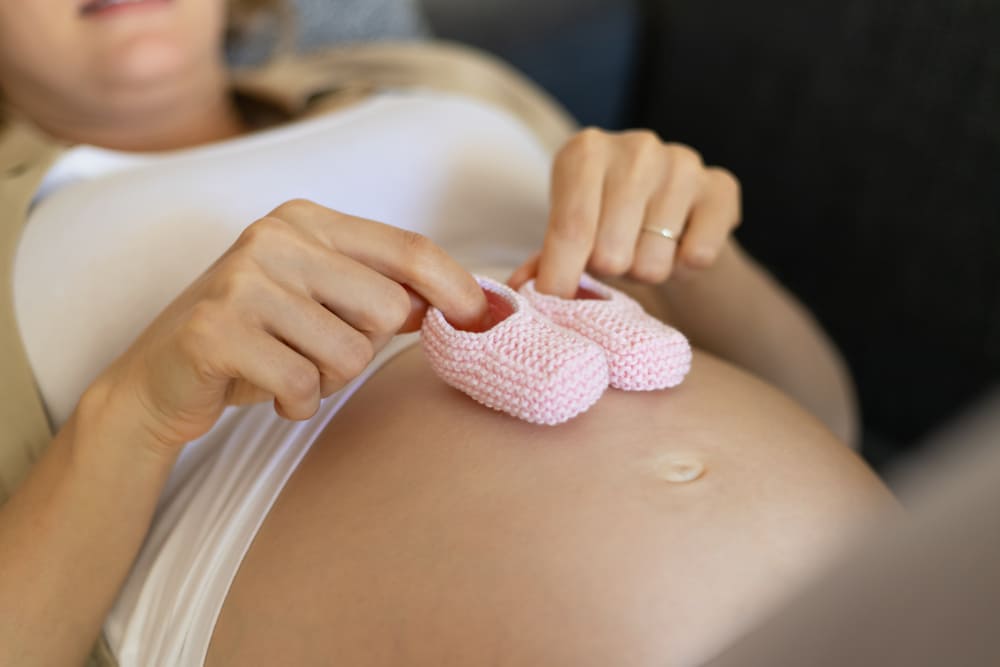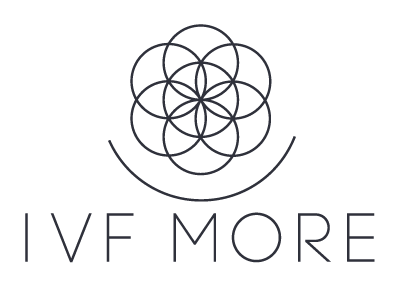Egg Donation Process vs. Egg Restoration: What’s the Better Option?
June 2025

When facing fertility challenges, many women explore two potential paths: egg donation and egg restoration. While both options can support the dream of parenthood, they differ in emotional impact, biological connection, and medical approach. For some, working with an egg donor through a clinic may seem like the most viable option. For others, the ability to conceive using their own eggs—even if few in number or lower in quality—is a deeply personal priority.
So, what is the egg donor process, and how does egg restoration compare? This blog will guide you through each path, helping you better understand your options and which might be the right fit for your journey.
What Is the Egg Donor Process?
The egg donor process refers to the series of medical, legal, and emotional steps a woman undergoes to donate her eggs to someone else. It’s a highly structured journey that begins with an application and ends with egg retrieval, often followed by in vitro fertilization (IVF) for the recipient.
So how does the egg donor process work? It starts with initial eligibility screening, continues with medical testing and hormone treatments, and concludes with the egg retrieval procedure. At every stage, fertility clinics work closely with donors to ensure safety, emotional readiness, and legal understanding.
Egg donors willing to donate their eggs is a remarkable act that has allowed thousands of families to grow. But while it’s a generous and selfless path, it’s also physically and emotionally demanding—which is why some women choose to explore alternatives like ovarian restoration.
Understanding the Egg Donation Process
The egg donation process is carefully coordinated by a fertility center, involving multiple professionals who manage the donor’s care throughout the journey. From the initial application to the final retrieval process, each step is designed to ensure the donor’s safety and the success of the procedure for the recipient.
Becoming an egg donor typically involves joining a program through a licensed clinic. The clinic guides each donor through the screening process, monitors their response to fertility medications, and supports them during the retrieval. Throughout this time, donors are often asked to attend several appointments and stay locally for monitoring.
While this process can be rewarding, it’s also intensive—both medically and emotionally. Understanding what to expect at each stage is crucial, especially as more women evaluate their options between egg donation and restoration.
Step 1: Application & Initial Considerations
The first step to becoming an egg donor involves completing an application at a fertility clinic or donation program. At this stage, basic criteria such as age, medical history, lifestyle, and family background are reviewed. Many women who are interested in donating do so for altruistic reasons or to help others build a family.
This early stage may also include a short interview or pre-screening call to determine eligibility. Clinics look for donors who are in good health, have no known genetic conditions, and are emotionally prepared for the donation cycle.
Step 2: Screening & Medical Evaluations
Pre-selected candidates must undergo rigorous medical testing. This includes blood tests, genetic screenings, transvaginal ultrasounds, and psychological consultations. These evaluations ensure that the donor is in optimal condition to begin the donation cycle.
The screening process is essential not only for medical safety but also for ethical transparency. Donors are educated about potential risks and outcomes, and the clinic ensures they fully understand their role in the process. This level of care helps maintain high standards in egg donor programs.
Step 3: Legal & Ethical Considerations
Before beginning treatment, donors sign legal agreements outlining their rights and responsibilities, including the waiver of parental rights. This process is overseen by legal professionals to ensure full understanding.
Because the ovum donation process involves creating potential life with someone else’s genetic material, the legal aspect is critical. These agreements often include anonymity clauses and outline future contact possibilities. Clinics also follow country-specific laws related to compensation and documentation.
Step 4: Egg Retrieval & Its Risks
The donor must take fertility medications for several days to stimulate ovulation. Then, under sedation, ovarian follicle aspiration is performed to retrieve the eggs. This procedure carries potential risks such as ovarian hyperstimulation syndrome (OHSS), abdominal discomfort, or hormonal side effects.
The egg retrieval itself is considered a minor outpatient procedure, but it must be done with expert care. The retrieval process requires timing, precision, and follow-up to ensure the donor recovers well. Clinics monitor donors post-procedure and provide instructions for managing any discomfort or side effects.
Emotional & Ethical Considerations of Egg Donation
While human egg donation can be incredibly fulfilling, it is not without emotional weight. Some donors feel empowered by their decision, knowing they’ve helped a couple conceive. Others may experience emotional highs and lows during or after the process—especially when considering the long-term implications of having biological children they may never meet.
For recipients, the use of donor eggs can bring up conflicting emotions. There’s often joy and relief but also quiet grief over the loss of a genetic connection. That’s why clinics emphasize psychological evaluations and offer counseling to support everyone involved in the donation journey.
As egg restoration becomes more accessible, many women now weigh these emotional factors more carefully, especially when faced with the choice between donation and restoration.
Why Egg Restoration is a Better Alternative to Egg Donation
Unlike donation, ovarian restoration doesn’t require giving up your genetic material. This technique is designed for women who wish to conceive with their own eggs but face challenges with quality or quantity.
IVF MORE® works directly with the patient’s eggs, enhancing their viability through regenerative techniques that help restore essential functions. This makes restoration a more personalized, less invasive, and emotionally fulfilling option.
Ovarian restoration offers the chance to preserve your genetics and sense of control and connection during the fertility journey. It eliminates the need for third-party involvement and reduces the intensity of the physical and emotional commitment required in the donation process.
How Egg Restoration Works: A Step-by-Step Process
Egg restoration may sound complex, but it’s built on a personalized, scientifically supported process. IVF MORE® tailors every plan to each patient’s needs—focusing on revitalizing your own eggs.
The entire restoration process happens under close medical supervision, and in many cases, patients experience improved outcomes compared to traditional IVF alone. For women who’ve faced failed cycles, low ovarian reserve, or age-related fertility decline, this pathway offers renewed hope.
Step 1: Fertility & Egg Quality Assessment
A full review is conducted including medical history, ultrasounds, antral follicle count, and hormone testing such as AMH. This helps determine treatment viability.
Step 2: Personalized Treatment Plan
Based on the diagnosis, a custom protocol is created for each patient, considering age, diagnosis, and reproductive goals. The plan may include stimulation cycles and egg banking.
Step 3: Micromanipulation & Magnetic Field Technology
Metabolic diagnostics are used to assess the eggs’ cellular energy. Eggs that require it are restored with biochemical factors derived from the patient’s own cells. Then, the eggs are cultured in a magnetic field environment to optimize development.
Step 4: Natural Egg Quality Enhancement
Through regenerative medicine, restored eggs achieve better cell division, form more viable embryos, and reduce genetic abnormalities.
Step 5: Optimized IVF Success with Your Own Eggs
Fertilization is performed using PICSI, an advanced technique that selects high-quality sperm. Embryos are then transferred into an endometrium previously optimized with platelet-rich plasma (PRP) or stem cells.
Egg Donation vs. Egg Restoration: Key Differences
When comparing egg donation and egg restoration, it’s essential to understand what sets these two paths apart.
- Genetics: Donation uses another woman’s eggs; restoration uses your own.
- Emotional Impact: Many women value keeping their genetic link, offering a unique emotional connection.
- Medical Process: Donation requires synchronization with a recipient; restoration moves at your own pace.
- Risks: Restoration avoids excessive stimulation and puncture risks if progressive egg banking is done.
Ultimately, both paths offer a chance at pregnancy—but restoration may be the gentler and more emotionally aligned option for women who still produce eggs, even in small numbers. It provides a way to pursue motherhood without compromise.
How to Decide Which Path Is Right for You
Choosing between egg donation and egg restoration isn’t just a medical decision—it’s an emotional one. It requires careful thought about your health, age, fertility goals, and how you feel about genetics and third-party involvement.
For women with no remaining egg reserve or with serious genetic conditions, egg donation may still be the best and only option. Working with a reputable fertility center can ensure that the process is handled with respect, care, and professionalism. Egg donors are thoroughly screened and supported throughout the journey, and many feel honored to help someone else build a family.
However, for women who still have some eggs left—even if they’ve been told those eggs are “low quality”—ovarian restoration offers an alternative worth exploring. With IVF MORE®, egg restoration isn’t just about improving chances of pregnancy; it’s about doing so on your terms, with your genetics, and with less medical intervention.
Ultimately, the right decision is the one that aligns with your values, your health, and your long-term goals. If you’re unsure, speaking to a fertility specialist can help guide your next step with clarity and confidence.
The Role of Fertility Centers in Both Paths
A qualified fertility center is essential to pursue egg donation or restoration. These clinics provide the tools, testing, medical expertise, and emotional support necessary for success.
In donor programs, fertility centers ensure that donors are thoroughly screened and cared for during the process. In restoration, they guide women through advanced techniques like metabolic diagnostics and embryo culture enhancements.
A trusted fertility clinic can help you navigate the complexities of each path and make informed decisions based on your health, goals, and values.
Why Choose IVF MORE® for Improving Egg Quality?
IVF MORE® is a pioneer in applying regenerative medicine to fertility. Their exclusive protocol combines metabolic diagnostics, egg restoration, magnetic field culture, and advanced techniques like PICSI and endometrial regeneration.
It’s also a safe and accessible alternative for women who want to avoid egg donation and achieve pregnancy with their own genetics. More than a treatment, it’s a renewed path to hope.
Start Your Egg Restoration Journey Today
If you’ve received a diagnosis that affects your fertility but you still have eggs, don’t give up on your dream. IVF MORE® can help turn possibilities into reality. Our team is ready to support you step by step with cutting-edge technology and a compassionate approach.
Even if you’ve been told your chances are slim, don’t assume donor eggs are your only option. Your body may still have untapped potential—and with the right support, there’s often more hope than you think. Ovarian restoration gives many women a renewed sense of possibility, especially after failed IVF cycles or discouraging diagnoses. The key is working with a clinic that offers advanced diagnostics and a personalized approach to your care.
Contact us today and discover how ovarian restoration can lead you back to the opportunity of becoming a mother—with your own eggs.
